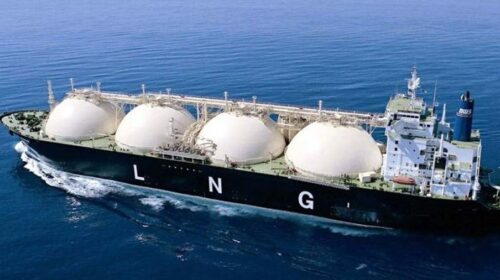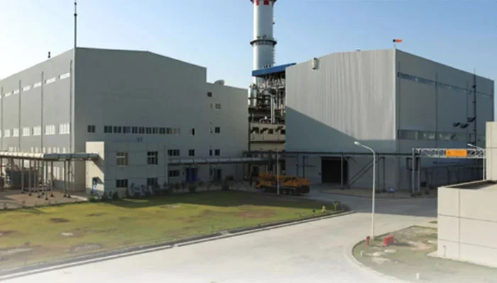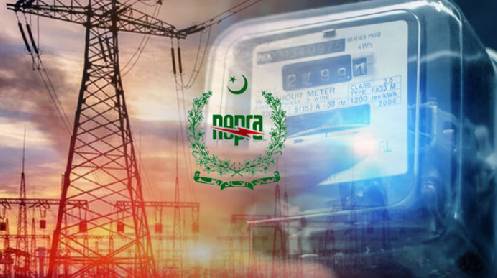With Federal Minister for Power Division and State Minister for Petroleum Affairs in place, the government, headed by Shehbaz Sharif, has carved out a plan to wriggle the country out of the energy crisis under which the LNG terminal operators would be allowed to utilize their excess capacity for importing more LNG and would be permitted to ink long LNG supply agreements on BtB (business to business) basis.
And more importantly, some of the underutilized capacity of 600mmcfd that the government has purchased in PGPL terminal will be doled out to the private sector also. The PGPL terminal has excess capacity of 150 mmcfd and Engro terminal 50 mmcfd. The government has also decided to make Gwadar Virtual Pipeline LNG Project operational, not given go ahead by the previous government because of their alleged vested interests.
This project, if gets operational, will not only cater to energy needs of Gwadar but also pockets of the country where piped gas is not available. More importantly, Gwadar would also be targeted to turn into an LNG and oil hub for which liberal policies would be announced to encourage investment.
Under the plan seen by The News, all the hurdles, in the way of establishment of two more LNG terminals — Energas terminal and second terminal by PGPL — would also be done away with. They will be operational on a private to private business model.The mandate for LNG terminals would be withdrawn from the Ministry of Maritime Affairs and restored to the Ministry of Energy for one-window facilitation. Energas terminal company is not being allocated the required pipeline capacity by SNGPL and SSGC, which is why construction work on Energas terminal has not yet started. The second LNG terminal to be constructed by PGPL faced unjustified snags created by the PTI government. Now the new government has decided to pave the way for early construction and completion of the two new LNG terminals.
However, the government would go for more GtG contracts for import of LNG to reduce reliance on spot procurement. The government also intends to dole out unutilized capacity of 100-150 mmcfd to the private sector to import LNG and sell it to the private sector.
Shahid Khaqan Abbasi, who played a pivotal role in last PML-N government in installing the existing two LNG terminals and laying down the existing RLNG pipeline, told The News that this government would go for more GtG agreements with LNG producing countries to have sustainable supply of LNG in the country at affordable prices.
He said the four RLNG based power plants located at Haveli Bahadur Shah, Bhikki, Balloki and Trimmu, need 700mmcfd RLNG. “We want them to run projects to ensure maximum power generated through these plants having 62 percent efficiency. The government also wants to run Thar coal based power plants to encourage more investment which will help promote the electricity generation on indigenous fuel to reduce the fuel import bill.” He also asked for privatization of DISCOs arguing that would be the only way out to reduce the circular debt.
As per the strategy, the government intends to build the North-South pipeline through its own resources with 42 inches diameter with the help of Sui gas companies as Pakistan Gas Stream Gas Pipeline (PSGP) project earlier being negotiated with Russia has ostensibly become a nonstarter in the wake of the sanctions by US and EU against Moscow. Pakistan does not want to delay the North-South gas pipeline project for transportation of LNG from Karachi to Kasur in Punjab. The financial guarantees will be provided to the Sui gas companies by the Government of Pakistan enabling them to raise funding.
The government has also decided to increase local LPG production by restarting JJVL (Jamshoro Joint Venture Limited) on either revenue sharing of 57.54 percent and 42.46 percent – as determined by the Supreme Court-appointed expert – for SSGC and JJVL, respectively, or through gas being supplied at the OGRA notified industrial tariff. All the targets would be achieved under the implementation of revised LNG and LPG policies to be notified soon.
The NAB laws, under the plan, will be diluted, so that bureaucracy does not hesitate to take the required decisions to ease the local LPG consumers and take hard decisions to make maximum gas available in next winter.
All the marginal fields will be activated to encourage increased local gas production and for this Exploration and Production (E&P) companies will be invited to Pakistan for providing them incentives to increase local exploration and production and save foreign exchange.The government would also immediately start bifurcation of the Sui companies into transmission and distribution companies and the latter would be privatized. And to this effect, hard decisions are needed to be taken.
The present boards of many SOEs (state-owned enterprises) are not capable of taking hard decisions necessary to turn the sector around. The boards of SSGC, PLL, SNGPL, OGDCL, etc. are some examples and would be changed within the first 30-40 days.
People from the sector and exceptionally qualified bureaucrats and bankers should be included in the boards. Likewise, the board of directors in electric power distribution companies (DISCOs), NTDC, GENCOs, which were earlier appointed by Tabish Guahar, then then SAPM on Power on political considerations, would be replaced by competent ones. The government also plans to expedite the process to set up a refinery at Khalifa Point.




